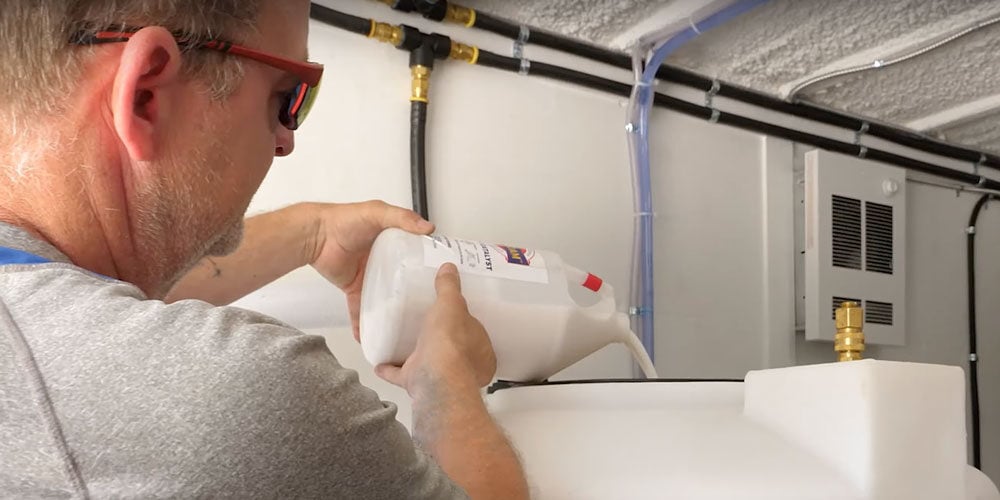Is RetroFoam Shrinkage a Concern for Homeowners?
injection foam insulation | RetroFoam insulation | foam university


As a homeowner, you may have heard the term “shrinkage” in relation to injection foam insulation, particularly with products like RetroFoam.
It’s something our dealers across the country hear all the time: “I hear this stuff shrinks.” “My friend had this done, and it shrank by 30 percent.” Everyone knows someone who had injection foam installed and later found out it shrank. This could be true, but not all foam insulation is created equal, and there’s likely more to the story.
This article aims to address common concerns and questions about RetroFoam problems, specifically focusing on RetroFoam shrinkage and insulation issues.
Let’s dive into the details and clear up any misconceptions you might have.
What is Injection Foam Shrinkage?
First things first, let’s talk about shrinkage.
In this case, the term “shrinkage” refers to the slight reduction in volume that occurs as injection foam cures. This is a natural part of the process.
While all injection foams experience some degree of shrinkage, it’s important to note that this is typically very minimal. For high-quality products, shrinkage is engineered to be around two percent. This minimal shrinkage is a controlled and expected part of the foam’s curing process.
RetroFoam Shrinkage: Controlled and Minimal
A frequent concern we hear is, “Injection foam? That stuff shrinks a lot, doesn’t it?”
High-quality injection foams like RetroFoam are designed to shrink by only about two percent. This is built into the product’s formulation. During the curing process, any trace amount of moisture within the foam evaporates, slightly reducing the volume. This process is tightly controlled to ensure that the shrinkage remains minimal and predictable.
Not All Foam is Created Equal
It’s crucial to understand that not all foam insulation products are identical.
Different types of foam—be it spray foam or injection foam—have their own properties, standards, and performance levels.
RetroFoam, for instance, stands out due to its high-quality formulation and minimal shrinkage rate. When considering foam insulation for your home, it’s essential to vet the products and understand their unique characteristics.
RetroFoam Insulation Problems: What to Watch for
Despite the high standards of RetroFoam, issues can still be primarily related to installation rather than the product itself.
Here are some key points to keep in mind.
Installation Issues
If you encounter significant shrinkage with RetroFoam, it’s usually due to an installation problem rather than the foam’s formula.
Injection foam, whether it’s an A and B type system or a pre-mixed product, is meticulously mixed to precise ratios.
Installation errors can occur if the wall cavity isn’t properly prepared or the foam isn’t applied correctly. For example, if a wall cavity is open at the bottom, the foam might seep out, leading to an under-filled cavity.
Human Error
Human error is another potential source of problems.
This could involve miscalculating the amount of foam needed or not accounting for unique construction features that affect foam distribution.
In existing homes, unlike new construction, there can be many unforeseen factors that complicate the installation process.
Ensuring Quality Installation
To avoid issues with injection foam insulation, working with experienced and reputable contractors is vital.
Here are some tips to ensure you’re getting the best service.
- Vet Your Contractors: Always ask questions about the product and the installation process. Make sure your contractor is knowledgeable about injection foam and has a track record of successful installations.
- Understand the Product: Know what product is being used in your home and why it’s chosen. RetroFoam’s minimal shrinkage and high-quality formulation should be key considerations.
- Post-Install Support: Ensure your contractor offers support after the installation. They should be willing to come back, inspect the job, and make necessary adjustments if there are any issues.
Choosing the Right Insulation Contractor for the Job
By understanding why injection foam insulation shrinkage occurs and what to watch out for, you can confidently choose RetroFoam for your home insulation needs.
While shrinkage is a natural part of the injection foam curing process, products like RetroFoam are designed to keep this minimal.
Most injection foam insulation problems are related to installation rather than the foam itself. Choosing a knowledgeable contractor and understanding the product ensures your home is properly insulated with minimal issues.
Check out our Learning Center for more information about RetroFoam insulation, installation tips, and building science. We have a wealth of resources, including videos, articles, and blogs, to help you make informed decisions about your home’s insulation.
Related Articles
4 Injection Foam Insulation Problems
RetroFoam Problems: Will Injection Foam Insulation Cause Moisture in My Walls?
Will RetroFoam Insulation Cause Corroded Electrical Wires in the Wall?
About Eric Garcia
Eric brings his knowledge and training in building science, training in spray and injection foams from the manufacturers, more than eight years installing foam insulation, as well as selling and managing in the foam insulation industry. He is also BPI and Dale Carnegie certified and has taken several building science courses, including air sealing and building envelope. Eric is the Professor of Foam on our educational YouTube series Foam University. Even when Eric is off he is usually still “working” or thinking about work, but when he can get away he enjoys camping, hiking, hunting, and woodworking.



